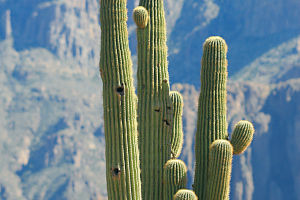Lions are large felines living in Africa and Asia. They are the largest average weight feline in existence and the only animals that you can tell the genders from the appearance in the world.
In the evolutionary history of large terrestrial mammals, lions are undoubtedly the most successful. In areas where lions are abundant, other cats are always at a relative disadvantage. For example, lion fossils unearthed in Europe and North America are often much larger in number and location than leopards, leopards, Saber Toothed tigers and jagged tigers of the same period. Lions have not spread to East Asia, which is probably because the mountain forests (closed habitats) in East Asia are not suitable for the survival of such a group of animals as lions, but are more suitable for another rising large cat, the tiger.
Lions were originally distributed in all parts of Africa, South Asia and the middle and Near East except the tropical rain forest. Now lions in other parts of Asia except Jill in India have disappeared. There are no wild lions in North Africa either. Lions are mainly distributed in the grasslands south of the Sahara Desert in Africa, so they can be regarded as a specialty of Africa. In the past, lions were found in all ecological environments except the frigid zone and sub frigid zone. Today, their living environment has been greatly reduced. They prefer grassland, inhabit tropical savanna and grassland, and may also appear in shrubs, dry forests and semi desert.
Lions usually live in groups. A lion group has about 8 to 30 members, with an average of 17. These often include successive generations of female lions, at least one adult male lion and some growing lion cubs. Female lions form the core of the pack and rarely leave their birthplace. The lion pack contains two adult male lions, but only one is definitely the leader. Adult male lions don’t often stay with the lions. They must wander around the territory all year round to defend the whole territory. Generally, they can be the leader of lions for months to years, depending on whether they have enough ability to defeat foreign lions.
The female lions in the lion group are basically stable. They generally stay in the same lion group from birth to death. The lions will also accept the new lioness. However, male lions often rotate. They usually only stay in a lion group for two years (there is also a record of six years). Either they are driven away by young and more attractive males, or they run away from home to find new relationships and families. In addition, young male lions who have just reached adulthood will also be driven away by the compulsory independence system implemented by the lions. In this way, there will be a lot of homeless lions on the grassland. There are young lions who are not deeply involved in the world, young adventurers who still exude charm, and old lions who have been defeated and driven away. These vagrants sometimes act alone and live in darkness. Sometimes they simply form a male mutual aid group. Before their members conquer another lion group, they are good friends who share weal and woe. They wander around the grassland to track the migrating prey. It is said that some male lions are so skilled and charming that they can control other nearby lions and maintain two "families" at the same time.


